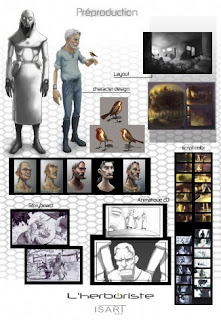Characters from a book are detailed significantly in extensive words, since there is no imagery. It lets your imagination run wild, and plays out your own interpretation in your mind.
For this reason, depending on the author, I believe characters in books can be as effective with the right imagination but it isn’t for everyone.
In TV and Film, characters have the advantage of visual facial expression, expressing pain, anger and happiness, through acting. The advantage and disadvantages depend on how good the actor plays the character, the right character chosen for the part (will the characters connect naturally and believably) and how effective the script is.
For this reason, depending on the author, I believe characters in books can be as effective with the right imagination but it isn’t for everyone.
In TV and Film, characters have the advantage of visual facial expression, expressing pain, anger and happiness, through acting. The advantage and disadvantages depend on how good the actor plays the character, the right character chosen for the part (will the characters connect naturally and believably) and how effective the script is.
In my opinion, if watching a TV program or Movie, in the space of time from start till finish you were so engrossed in their experience, you forget they are acting, it means the characters and script have done their job.
The techniques used to make the audience respond to characters, are made from numerous factors, their acting, their connection with other actors, the script and their appearance.
Acting?
After watching any character for no more than 5min you automatically know if you can relate and believe what they’re saying, whether it’s a random conversation that means nothing or a serious life and death matter. If the actor can pull off everyday realism, what we go through (normality) it makes us respond positively.
After watching any character for no more than 5min you automatically know if you can relate and believe what they’re saying, whether it’s a random conversation that means nothing or a serious life and death matter. If the actor can pull off everyday realism, what we go through (normality) it makes us respond positively.
Appearance?
Appearance is extremely important in character choice. As an audience, it is the first thing we see and judge by. This can play a big part in stereotypical imagery, for example a teenage guy with a hoody rapping in a part, would come over as normal, but play a 50 year old guy in that exact part, would give a whole different response to that character. It would not be taken as seriously.
Appearance is extremely important in character choice. As an audience, it is the first thing we see and judge by. This can play a big part in stereotypical imagery, for example a teenage guy with a hoody rapping in a part, would come over as normal, but play a 50 year old guy in that exact part, would give a whole different response to that character. It would not be taken as seriously.
In film, most people get their parts because their face fits; whether they can act the part comes second. It just shows what an impact appearance plays in characters.
Script?
A bad script can make the best of actors look bad. Each part plays a crucial role in the final end product. Failure to do so in any of the above can cause a bad response.
A bad script can make the best of actors look bad. Each part plays a crucial role in the final end product. Failure to do so in any of the above can cause a bad response.
The type of stories I find irresistible are mainly Asian dramas. I become quite addicted!.
There is a type of formula they use for Asian dramas that work. I find British and American dramas rarely have this with a few exceptions.
There is a type of formula they use for Asian dramas that work. I find British and American dramas rarely have this with a few exceptions.
It’s very important for the story to build up the character’s personality throughout the story, whether it’s their innocence, rebellious nature, or being plain misunderstood showing their change overtime.
If not done correctly, the viewer will not care, or sympathise with the character. You want your audience to feel something and make a connection with the story and what’s happening to the characters in it.
With Asian Romance dramas especially, the build-up of how the characters begin to like each other is very important. If the script and characters are not believable and have not been put through much effort to get there, the bond and chemistry will be lost and the audience will not care.
If not done correctly, the viewer will not care, or sympathise with the character. You want your audience to feel something and make a connection with the story and what’s happening to the characters in it.
With Asian Romance dramas especially, the build-up of how the characters begin to like each other is very important. If the script and characters are not believable and have not been put through much effort to get there, the bond and chemistry will be lost and the audience will not care.
Devil Beside You













